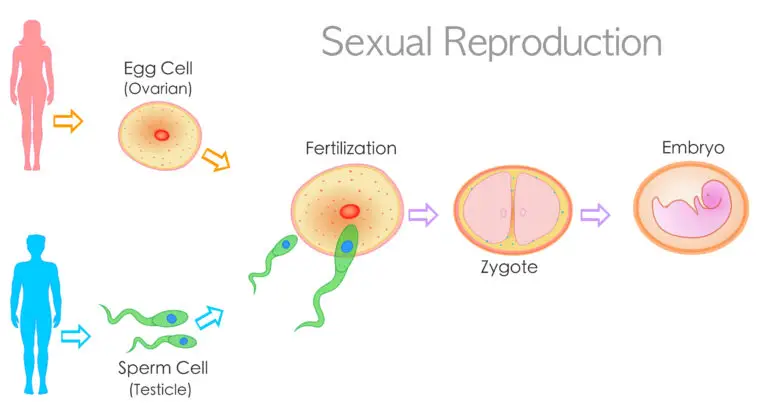Sexual Reproduction

Table of Contents
What is Sexual Reproduction?
Sexual reproduction is a biological process by which offspring are produced through the fusion of gametes, resulting in the formation of genetically diverse individuals. This process involves the combination of genetic material from two parent organisms and is characteristic of many eukaryotic organisms, including animals, plants, fungi, and some protists.
Overview of Sexual Reproduction
Gametes
Sexual reproduction involves the formation of specialized cells called gametes. Gametes are haploid cells, meaning they have half the number of chromosomes as the somatic cells of the organism. In animals, the male gamete is called sperm, and the female gamete is called an egg or ovum. In plants, these gametes are often referred to as pollen (male) and ovule (female).
Meiosis
Gametes are produced through a specialized type of cell division called meiosis. Meiosis reduces the chromosome number by half, ensuring that when gametes fuse during fertilization, the resulting zygote has the diploid chromosome number characteristic of the species.
Fertilization
Fertilization is the process in which a male and a female gamete fuse to form a zygote. This fusion restores the diploid chromosome number in the zygote, which then develops into a new organism.
Genetic Diversity
One of the key advantages of sexual reproduction is the generation of genetic diversity. The combination of genetic material from two parents through the shuffling and recombination of genes during meiosis and fertilization results in offspring with unique genetic compositions.
Internal or External Fertilization
Sexual reproduction can involve internal fertilization, where fertilization occurs inside the body of one of the parents (common in many animals), or external fertilization, where gametes unite outside the organism’s body (common in aquatic organisms).
Examples of Sexual Reproduction
Animals: Mammals, birds, reptiles, amphibians, and most insects reproduce sexually. In mammals, for example, sperm from a male fertilizes an egg from a female, leading to the development of a new individual.
Plants: Many flowering plants reproduce sexually through the formation of flowers, where pollen from a male structure (anther) fertilizes the ovule in a female structure (ovary). This process results in the formation of seeds and fruits.
Fungi: Fungi can reproduce sexually through the fusion of specialized reproductive structures called gametangia or through the production and fusion of specialized spores.
Protists: Some protists, such as certain algae and protozoa, exhibit sexual reproduction. This can involve the fusion of gametes or the exchange of genetic material between individuals
Related Links
Fertilization
Gamete
Yolk
Zygote